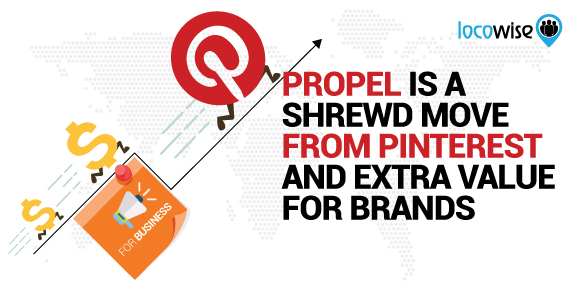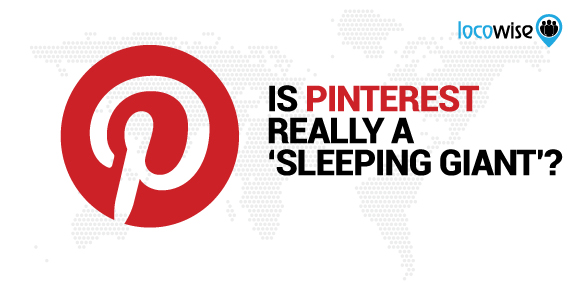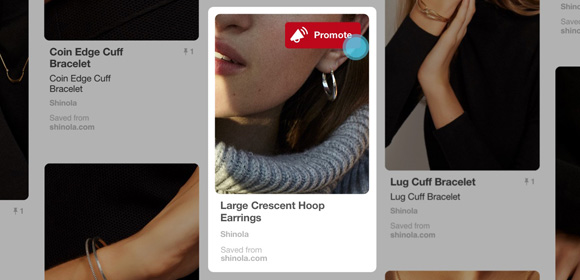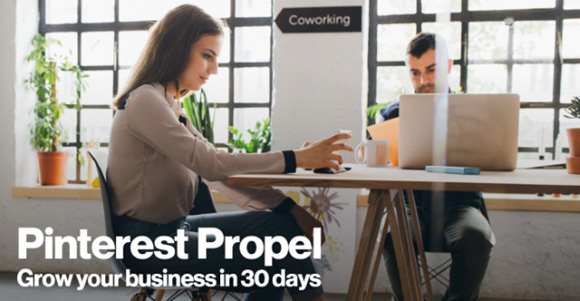Propel Is A Shrewd Move From Pinterest And Extra Value For Brands
Sahail Ashraf posted on 10 April 2017
Who is Pinterest for? That’s easy. Pinterest is for everyone.
It has become a very useful place for most people. Consumers love it because it allows them to show off their favourite things or holiday snaps. Businesses know that it has definite potential if they have a new product launch coming up. Pinterest makes it easy to showcase that new product and get the audience wanting to know more about it. It’s simple and easy to use, but it was only a matter of time before it became somewhere you could place ads. Now, a brand can even be coached on how to use the platform, by the platform itself.
So here is the news. Pinterest is now rolling out (North America and Canada only at this point) a brand new way of managing the advertising that is bought on the platform.

The whole idea is interesting because with a lot of social media at the moment, bought advertising often helps brands to raise awareness quickly, for example. Brands that are able to spend a regular amount are well placed to have a strong presence. The new service Pinterest has created is one that rewards smaller, growing brands that spend regular amounts to advertise on the platform.
And we think it is nothing short of genius. Of course, if you run an agency or you have a Pinterest account for your brand, much of what is involved in the offer will be a little redundant. But the entire setup is essentially marketing the product while being paid (on Pinterest’s part) and educated and supported (on the client side). This all leads up to a situation where Pinterest is further monetised, along with the possibility of a clear upsell at the end. We will get to the new offer later in the post. For now, let’s take Pinterest’s pulse.
Precocious but loved
When Pinterest first came to be known it wasn’t an overnight success but it certainly felt like one. It had massive growth in 2012 and suddenly became the darling of the social media landscape. It had a predominately female user base right at the start, but has gradually become a platform that anyone can feel at home on. Brands have taken up the challenge of being on Pinterest and have responded with high quality imagery and fun posts. Sure, it works best with product-based brands, but that’s no biggie. Any brand can find a home there if it has creatives that are capable of thinking outside the box a little.
Another aspect that characterised the platform is the ‘re-blogging’ approach. Similar to Tumblr, it soon became apparent that users were more comfortable re-pinning on the channel. This means that if a brand was partially successful in having an impact and some engagement, it could quite easily expect to see a snowball effect because Pinterest is very community based. It is all about what people like to see. Alongside that brands became even happier back in that first early stage when they discovered that Pinterest had a higher and faster growth rate than the equivalent period of growth for Facebook.
Some of the biggest brands there right at the start were retailers, and people quickly saw the light in this respect. Images became better, more professional, and it clicked as a platform. By 2016 a third of US Internet users had a Pinterest account.
Promoted Pins came along, and companies realised that they could leverage engagement, and therefore make Pinterest work for them as a marketing and ad tool. Keywords were permitted, which meant proper, focused advertising was now a possibility on one of the fastest growing social media channels on the planet.
So why the new deal? Why Propel?
Propel and what it does
We haven’t really seen anything like this with any other social media network. There are kind of similar instances here and there, but these are usually set up by the client and the network. It’s essentially a training scheme, whereby businesses get the best out of Pinterest because Pinterest is offering customer service directly.
If a brand spends at least $100 a day on Pinterest, Pinterest will offer a high level of support so that the ad spend is handled wisely, with a focus on growth. When you consider that there are still brands out there that are spending money on the platform without any kind of plan, it kind of makes sense.
But this is also a definite and quite open push towards bringing in small to medium-sized businesses. These businesses are not necessarily a major part of Pinterest’s future, but they can grow. And the Propel scheme is aimed at doing just that.
If you’re a business and you sign up, then you will receive the following if you spend at least $100 a day on Pinterest’s advertising options:
A level of one-on-one support from Pinterest that is quite impressive. A business that is part of Propel can expect phone support for 30 days. This support is provided by what the brand calls ‘Pinterest experts’
A little less useful perhaps (but maybe cooler) is the provision of some custom pins that have been specially created for users of the scheme
Training sessions (Pinterest is not specific on these) on top of that 30 days phone support, and some guides that the brand provides
The best one (we think). A set of tips and advice for up to three clients the business has. So if you’re a member of Propel and you have clients you’re using Pinterest for, you can expect the company itself to offer some targeted advice
A sign of the times
This is a clear indicator of the growth cycle of social media networks. Looking at it more carefully, it is easy to see the similar behaviour from Facebook and Twitter over the last couple of years. Both these platforms have successfully cracked the small business market. Pinterest is looking to do the same.
The key thing here is the fact that you have to spend at least $100 a day on ads to qualify for Propel. This does open up a lot of the SME market. And if you’re an agency there is absolutely nothing wrong with you using the support and the client-focused help Pinterest will offer.
Tim Kendall (the President of Pinterest) had this to say about the new venture:
‘This is a huge part of the advertising market and so what it sets us up to do is capture more growth…’
And at the same time, Pinterest is quite likely to go for an IPO soon. Money is the key factor here. Pinterest is also looking at helping SME’s to grow on its platform, which speaks for itself, really.

Since sign-up is free, it may be worth an SME going for it. Obviously, it’s worth making sure the input from Pinterest is effective. Try it out. It’s definitely not stopped growing. If anything though, this is a great way for a social media network to work with its growing business users.
You need the best metrics if you’re a digital agency. And if you’re a brand on social, you expect the best from your agency. Take a free trial of Locowise. You get 7 days free. After that, we’re certain you’ll never look at social media in the same way again.






